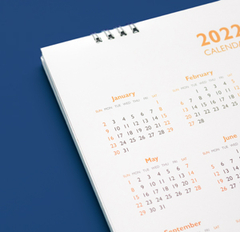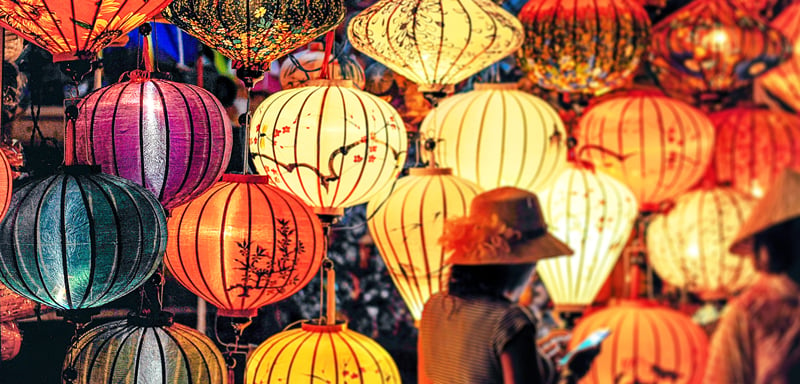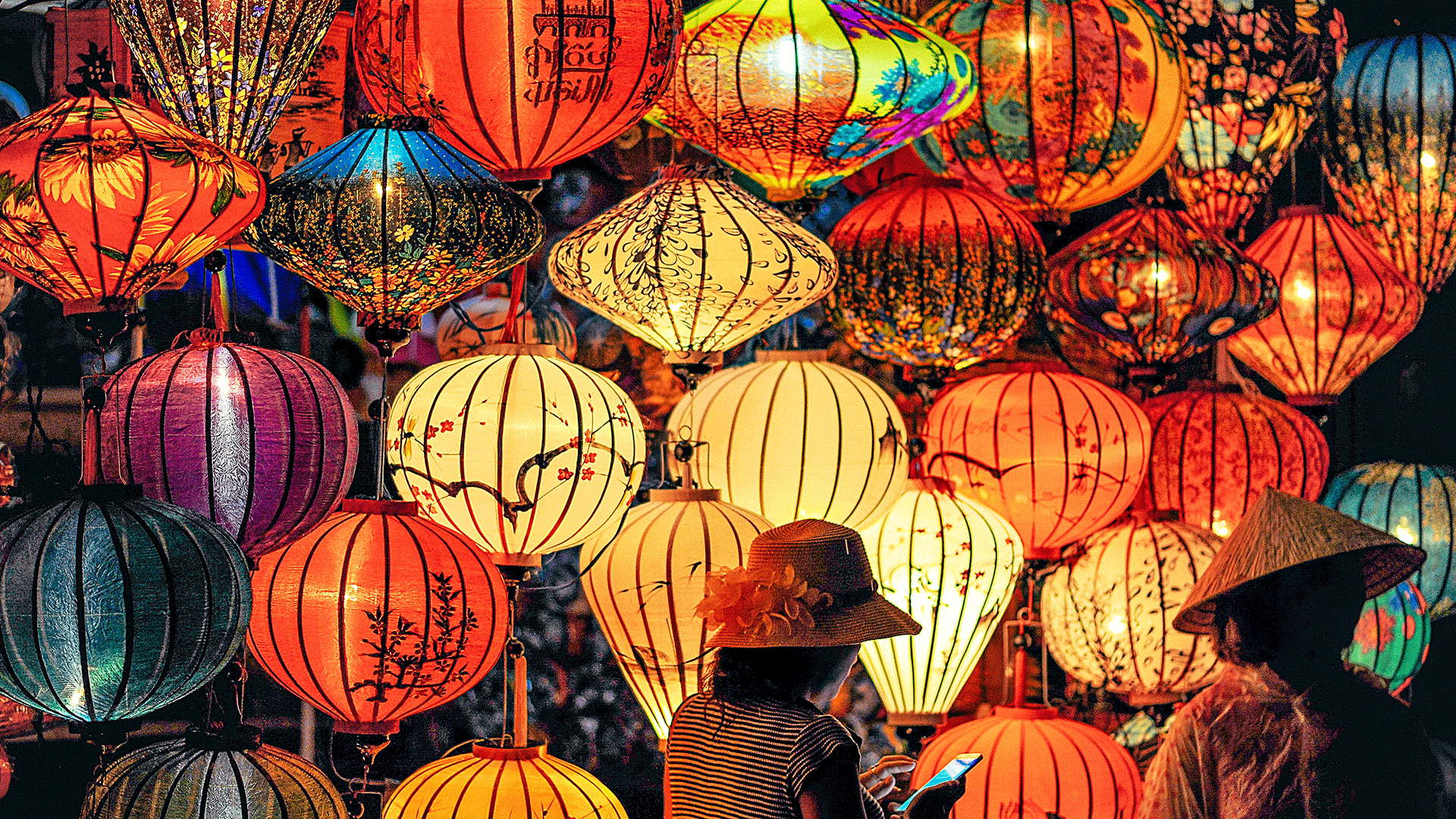2024 is moving fast. February is right around the corner, and this year is sure to be a big one for your social media campaigns!
To help you maintain a killer social media editorial for 2024, we made a calendar marking some special events and other opportunities around the world for this year, and in this post, we're going to highlight February's biggest global event: Chinese Lunar New Year.
What makes Chinese New Year special?
Chinese New Year is important for an enormous part of the global population, a time of renewal, of family and friends, and the observance of a very long tradition.
Chinese New Year, also known as the Spring or Lunar Festival, is a multi-day celebration that begins on the first day of the traditional Chinese Calendar. In some years, this can occur at the end of January, but in 2024, the festival kicks off on Saturday, February 10th.

Not only is it an important cultural event, it's also the single largest travel period of the year anywhere on Earth, vastly exceeding Christmas travel globally. There's even a name for the period: Chunyun, (Spring Festival travel rush), which is a roughly 40-day period starting in mid-January. It was estimated in 2020 that about 3 billion passenger journeys would occur globally.
Official celebrations last seven days, but the festivities often run for two weeks until the Lantern Festival, which takes place on the 15th day of the first lunar cycle. In 2022, that date is February 15th. Because the dates are based on the phases of our moon, they vary from year to year. In 2023, Chinese New Year will begin on January 22nd.
 An interesting note on calendars worldwide:
An interesting note on calendars worldwide:
Unless you're living in Afghanistan, Iran, Nepal, or Ethiopia, you're almost definitely using the Gregorian calendar in some form. A number of other countries use modified versions of the Gregorian, and 18 others use both traditional or religious calendars alongside the Gregorian. It may be worth keeping these in mind when creating international or regional content on social media!
Celebrated not only in the world's most populous country, China, Chinese New Year, or a variant of it, is also popularly observed in many other East Asian countries like Thailand, Indonesia, and the Philippines, as well as many communities around the world including those in North America and Europe, making it an enormous opportunity for your company or organization to put its best foot forward and acknowledge the traditions of an enormous global demographic.
If done tastefully and accurately, showing solidarity and respect for one of the world's largest groups via social media can work in your favor.
What happens during the Chinese New Year?
As a traditional holiday period with a long cultural history, a number of activities take place during Chinese New Year. These include the preparation of special dishes, grand fireworks displays, the exchange of money between friends and family – traditionally gifted in red envelopes –, and activities honoring ancestors and the deceased. Of course, the lighting of lanterns plays a central role as well.
Each day is marked by different activities and traditions, and these too can vary from region to region.
Fun fact: One of the reasons gifts are exchanged in red envelopes and why red is so commonly seen during the lunar new year is steeped in mythology. Traditional folklore varies, but a common and extremely simplified story is that a village was being terrorized by a monster. After a traveler offers to stop the best, the villagers discover that the monster is afraid of the color red. Thereafter, the villagers dress in red, hang red lanterns, and take other colorful measures to ward off the creature. The myth goes on, but that's the gist!
We could write a book about everything that takes place during Chinese New Year, but we won't since that's not why you're here. If you want to learn more details out of curiosity or to create specific content, you can get more detailed info by following this link.
Moving on.
Incorporating Chinese New Year into your social media editorial
First, let's establish that the key to virtually any editorial additions is that they should be made in some way relevant to your organization's pages directly or indirectly. You could incorporate holiday events and activities into your content in many ways, but sometimes, the best way to do it is to remain less promotional.

Social media can be a fantastic and extraordinarily powerful platform for e-commerce and sales, but that was never its original purpose and not the reason at all why individual users make accounts. Nobody is on Instagram because they want to see your ads; they want to be connected, informed, and entertained.
If your ads can also suit this purpose, that's the dream, but sometimes it's better to remind your followers that your organization is made up of people who care about their customers and followers, not just a money machine.
This is especially true during holidays or cultural events since it's important not to look like you're simply a greedy company taking advantage of an important heritage tradition.
To do this, non-promotional content can vary from something as simple as well-wishes for the new year to "mood" content, such as photos or other visually impressive imagery that sends a message of respect and support rather than one of sales.
Simply featuring graphics or basic text posts that inspire and acknowledge can have a powerful effect. People like being recognized and respected, and showing your followers that you think their traditions matter can go a long way toward fostering brand loyalty.
Not to mention, it's good for engagement.
That doesn't mean you can't promote at all
Chinese New Year is a big deal, and people have a lot of needs during this time. The travel, restaurant, and hospitality demands alone are usually incredible.
But interestingly, in 2020 and 2021, despite Covid-19 wreaking havoc around the globe, Chinese New Year spending actually went way up! This may seem counterintuitive because less travel, more staying at home, etc., should imply reduced spending, right?
Not so.
According to this piece by think.ing, business activities in restaurants and retail related to Chinese New Year spiked overall by 28.7% in 2021. This has a lot to do with urban populations not traveling to rural areas and an increase in gifting in industries such as electronics (39%) and jewelry, which rocketed up 161%, among others.
This means that it is a time like no other to remain visible to your target market. It means subtle reminders to your followers that you and your products exist. You may also want to keep your social media ad rotations in motion and maybe even create some holiday-themed ads, though not as feed content.
Just don't overdo it.
It's worth noting that Chinese New Year most often includes official public holidays, which usually occur during the first 1-3 days depending on country, meaning that many businesses may be closed. This may affect your activities for better or for worse and should be kept in mind.
You must be careful with any cultural content
When handling traditional or religious observances on social media, the name of the game is researched first and foremost because anything you decide to say on your pages needs to be done carefully. This is generally good social media practice regardless of topic, but it is especially important in this case.
When you start involving yourself with traditions and customs closely tied to a group's identity, you need to get your facts straight. Social media can be merciless, and blunders here can have explosive consequences.
Ensure that your marketing team looks into everything it goes to post. Make sure that content is culturally and politically sensitive. Then double-check it, and if need be, ask an expert.
Over the years, many companies have fallen prey to inaccurate messages or communication failures when producing translated content. Mistakes may make you seem a bit goofy, and at worst, you may offend someone. This is true for all international campaigns. To further clarify the need for enterprises to be careful with international campaigns, we wrote a whole guide to it, which you can download here for free.
One important example to be wary of is an approach to Taiwan.
Naturally, just as in Mainland China, the Taiwanese people also largely observe the Chinese Lunar New Year.
However, referring to Taiwan as a sovereign country is a highly controversial and political consideration and a very common "mistake". Because the People's Republic of China claims that Taiwan is still a part of it, saying otherwise on social is a surefire way to tick off a lot of people in a big way.
Many companies and influential individuals worldwide have made this mistake and faced extreme consequences. Some companies have been "forced" to withdraw certain comments on social media or in product advertising that mislabeled the island. These have included Gap, Versace, Nike, and Coach, to name a few.
Just this past year, in 2021, US former pro-wrestler and actor John Cena made a statement referring to Taiwan as a country on his Weibo account, which blew up and resulted in a profuse, public video apology in Mandarin.
After everything above, we don't want to discourage you. We wouldn't suggest holiday content if it weren't a valuable idea, so it's still a worthwhile investment of time for your social media team to come up with something, and pitfalls can be avoided with a bit of caution.
Still, if you're not 100% sure of your statements' accuracy or likely impact, maybe it's best to skip this one.
Don't forget about censorship
Most major global social media platforms, such as Facebook, Instagram, YouTube, and most recently, LinkedIn, are censored in Mainland China. Thus, content for these platforms intended for this specific audience may not always be met with great success.
If your company operates on social media with a Chinese audience in mind, China keeps many of its own extremely popular social media sites, including Weibo, Douban, and WeChat, among others.
In any case, the community outside China that participates in Chinese New Year festivities still numbers in the hundreds of millions and is still active on social media platforms such as Facebook, Instagram, TikTok, and the rest.
Lastly, be cautious with translations
It is a common theme among social media pages to wish fans and followers well during celebrations such as Chinese New Year, Ramadan, Diwali, etc. There's nothing wrong with these gestures in general, and they can make for a very short and sweet content piece that sends a small message of positivity without getting too involved.
But many decide that it's a nice gesture to offer these well-wishes in the native language(s) of their target audiences. And it certainly can be! Many people like recognition in their native languages and greatly appreciate the attempt.
Unfortunately, translations can also be a trap.
As many owners of poorly researched tattoos can attest, languages do not always translate cleanly 1:1, and Chinese languages don't always translate into English or other European languages very well, such as closely related German and English might.
Be careful when wishing prosperity – a common theme at this time of year – or other well wishes. As with other languages, there are many ways of formulating statements; some are better suited to certain situations than others.
Ensure your content is properly localized, and if possible, ask a native speaker. Machine translation tools such as Google Translate or DeepL are great for checking overall meanings and certain kinds of text, but they often lack subtleties and nuance, which are very important in professional and public cases such as this.
If you're not 100% sure, it's best to stick to a language you speak. Your followers will still probably get the message.
Conclusion
As one of the world's most celebrated annual events, Chinese New Year is a goldmine of opportunity for social media managers across virtually any industry. Creative marketing teams can devise countless ways to appeal to followers by embracing the festivities and fostering a respectful, globalized company image.
We can't tell you whether taking part in certain global events on social media is always in the best interest of your organization's campaigns or not - that's for you to decide. But we can point out the potential.
And finally, if you're looking for a great solution for creating and supporting a full social media content editorial in 2024 and beyond, Facelift offers the features you need to succeed.
With Facelift, you can plan campaigns, schedule content across all your social media channels, and engage directly with your community with centralized, customizable inboxes and communication tools.
To get started yourself, you can start your free two-week trial of Facelift without any commitment or credit card info required. Visit this link and give us the chance to show you what we can do!
Or, schedule a demo with our product experts and take advantage of their knowledge!






